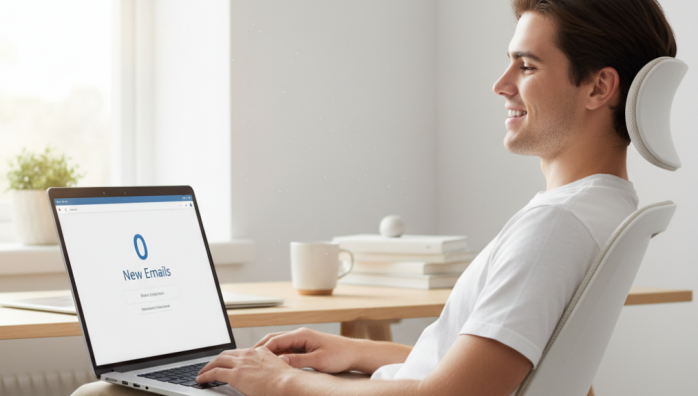Implementing the Inbox Zero Email Strategy
by admin in Productivity & Tools 15 - Last Update November 18, 2025

I used to believe that a cluttered inbox was just a side effect of a busy professional life. I remember staring at the four-digit unread count, feeling a mix of dread and resignation. Every email felt like another task, another demand on my limited attention. I tried everything—complex folder systems, endless color-coded labels, and a dozen different apps. Nothing stuck. The real shift happened when I stopped treating the symptom (the number of emails) and started addressing the root cause: my entire approach to managing digital communication. That\'s when I truly committed to implementing the Inbox Zero strategy.
What Inbox Zero really means to me
Honestly, the name \'Inbox Zero\' is a bit misleading. It terrified me at first. I thought it meant my inbox had to be empty 24/7, an impossible standard. But after practicing it for years, I\'ve realized it\'s not about having zero messages. It\'s about spending zero mental energy on a cluttered inbox. The goal is to make a decision on every single email that arrives, so your inbox is no longer a chaotic, anxiety-inducing to-do list. It becomes a simple processing tray, and that mental shift is everything.
My practical 4-step process for reclaiming your inbox
Getting started was the hardest part, but breaking it down into a repeatable system made it manageable. This isn\'t just theory; this is the exact process I\'ve refined through trial and error. It’s what keeps my digital workspace calm and functional.
Step 1: The one-time purge (or \'email bankruptcy\')
You can\'t organize chaos. My first, liberating step was to archive everything older than two weeks. I just moved it all into a single \'Old Inbox\' folder. It felt radical, but I quickly realized that if something was truly urgent, the person would follow up. This gave me a clean slate and the motivation to build a new habit.
Step 2: Process, don\'t just check
I stopped checking my email constantly. Instead, I set aside two or three specific times a day to \'process\' it. During these blocks, my only goal is to empty the inbox using the system below. This batching technique saved me from the constant distraction of notifications and allowed for deep, focused work.
Step 3: Mastering the 4 D\'s
This simple decision-making framework is the engine of Inbox Zero. For every single email, I force myself to choose one of these four actions immediately:
- Delete/Archive: Does this require any action from me, or do I just need to be aware of it? If not, it gets archived or deleted instantly. I’d say this applies to over 50% of my emails.
- Do: If the task takes less than two minutes, I do it right then and there. Replying with a quick confirmation, forwarding an attachment—get it done and out of the way.
- Delegate: If I\'m not the right person to handle it, I forward it to the appropriate person and then archive my copy.
- Defer: This is for emails that require more than two minutes of work. I move these to a separate \'Action Required\' folder or, even better, turn them into a task in my dedicated task manager. The email is then archived, leaving my inbox clear.
Step 4: A truly minimalist folder system
I threw out my dozens of project-specific folders. It was a time-wasting illusion of organization. Now, my entire system is just three folders outside of the inbox: a temporary \'Action Required\' folder for deferred items, a \'Waiting For\' folder for delegated tasks I need to track, and the main \'Archive\'. That\'s it. Search is so powerful these days that a complex folder structure is obsolete.
The biggest mistake I made (and how to avoid it)
My first attempt at Inbox Zero failed because I became obsessed with the \'zero\'. I felt like a failure if 10 emails were in my inbox at the end of the day. The breakthrough came when I understood that the goal isn\'t an empty screen; it\'s a clear mind. The system is there to serve you, not the other way around. Don\'t aim for perfection. Aim for a consistent process and the peace of mind that comes from knowing nothing important is slipping through the cracks. It’s about control, not emptiness.














